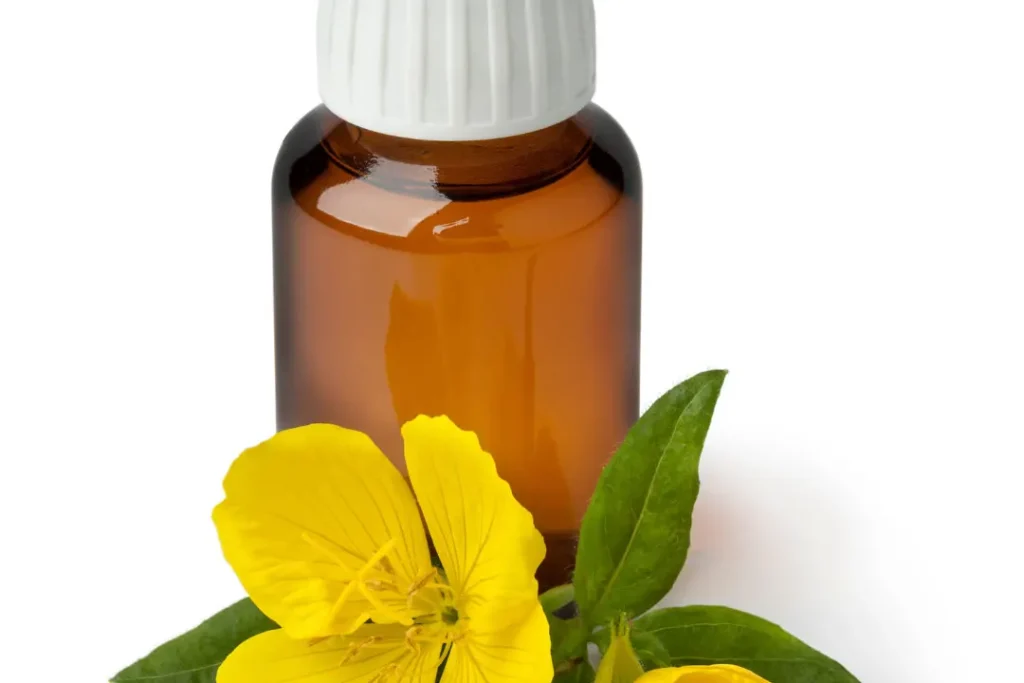In the field of nutritional research, gamma-linolenic acid (GLA), which is categorized as an omega-6 fatty acid, is a crucial substance. Since the human body cannot naturally produce it, food consumption and supplementation are the main ways to obtain it. GLA has drawn interest since it can have health advantages and influences multiple physiological processes. The goal of this article is to provide a thorough examination of GLA by addressing its chemistry, health advantages, recommended dosage, potential side effects, and interactions.
You May Also Like:
Sunmed CBD vs. Partnered Process CBD: Finding the Best CBD for Sleep
What is Non Restorative Sleep? Here are 5 Great Ways to Get Quality Rest Every Night
Gamma Linolenic Acid: Benefits, Dosage, Side Effects, Drug Interactions, and Other Important Information is an original (NootropicsPlanet) article.
Nature of GLA
GLA, a polyunsaturated fatty acid with 18 carbons, has two cis double bonds that give it a special structure. With its initial double bond of six carbons from the omega end of the molecule, its structure places it among the family of omega-6 fatty acids. GLA is an exception to the rule of omega-6 fatty acids, which often have an inflammatory effects on the body.
The principal source of GLA is the conversion of linoleic acid (LA), an important omega-6 fatty acid. The endogenous production of GLA is constrained. Age, heavy alcohol intake, and nutritional inadequacies can all interfere with this conversion process, which is carried out by the enzyme delta-6-desaturase (D6D), decreasing the effectiveness of GLA synthesis.
Dietary sources like evening primrose oil, borage oil, and black currant seed oil provide substantial amounts of GLA, offering an alternative pathway for its acquisition.
Health Benefits of GLA
GLA has many health advantages, mainly because of its anti-inflammatory properties. These advantages are attributed to its function as a precursor to the production of dihomo-gamma-linolenic acid (DGLA), which results in the synthesis of anti-inflammatory eicosanoids.
The effects of GLA on cardiovascular health is one important area of research. According to research, GLA can aid in reducing systemic inflammation, a major contributor to cardiovascular disease. Additionally, it can lower LDL cholesterol levels, thereby slowing the development of atherosclerosis.
The use of GLA supplements to treat autoimmune diseases like rheumatoid arthritis has also showed potential. GLA can reduce these illnesses’ pain and edema by taming inflammatory responses.
GLA is also connected to better skin health. It can promote hydration, elasticity, and barrier function, contributing to overall skin vitality. These benefits are primarily attributed to the role of GLA in the synthesis of ceramides, the crucial components of the skin’s barrier.

Chemistry of GLA
Gamma-linolenic acid (GLA) is an 18-carbon polyunsaturated fatty acid that stands out for having two cis double bonds in its structure. The fatty acid molecule is classified as an omega-6 fatty acid because the initial double bond is six carbons away from the omega end. The omega-6 fatty acid of GLA has anti-inflammatory properties, in contrast to many of its pro-inflammatory omega-6 relatives.
Linoleic acid (LA), an important omega-6 fatty acid, is converted into a small amount of endogenous GLA. It is mediated by the enzyme delta-6-desaturase (D6D). However, several variables, including your age, if you drink alcohol heavily, or if you have any nutritional deficits, it can decrease D6D function, which also decreases the effectiveness of GLA generation.
GLA is abundant in dietary sources such as black currant seed oil, evening primrose oil, and borage oil.
Physiological Properties of GLA
GLA’s involvement as a precursor in the production of prostaglandins, particularly series 1 prostaglandins, which are powerful anti-inflammatory compounds, is primarily responsible for the advantages it has on health. Once within the body, dihomo-gamma-linolenic acid (DGLA) is created by the elongation and desaturation of GLA. Series 1 prostaglandins, which are essential for controlling inflammatory and immunological responses, are produced when DGLA is further degraded.
In addition, DGLA and arachidonic acid (AA) compete for the cyclooxygenase enzyme. The pro-inflammatory series 2 prostaglandins and thromboxanes can be produced less as a result of this competition. GLA can clearly tip the scales in favor of an anti-inflammatory condition.
GLA takes part in the production of ceramides, lipid molecules that are essential for maintaining the health of the skin barrier. GLA improves skin hydration, suppleness, and barrier integrity by adding to the ceramide pool.
By lowering systemic inflammation, a significant risk factor for cardiovascular disease, GLA can have positive benefits on cardiovascular health. GLA can also reduce LDL cholesterol levels, perhaps reducing the development of atherosclerosis.

Optimal Dosage of GLA
The ideal GLA dose varies depending on the ailment being treated, your age, and current state of health. The recommended daily dosage ranges from 200 to 500 mg, however greater amounts may be required to treat some disorders, such as rheumatoid arthritis or atopic dermatitis. Your healthcare expert should be consulted for specific guidance on GLA supplementation.
Side Effects
Despite the fact that GLA is often well accepted, certain side effects such as headaches, diarrhea, and gastrointestinal discomfort are possible. These negative effects are often minor and can become less frequent with time.

Potential Substance Interactions
GLA and several medicines can interact with each other. For example, it can intensify the effects of anticoagulants or antiplatelet medications, thus raising the risk of bleeding. Additionally, it can interact with immunosuppressants, anti-hypertensives, and anti-inflammatory medications. Therefore, before beginning a GLA supplementation regimen, if you are using such drugs, you should talk to your doctor first.
Best Responsible Use
The numerous functions of GLA in maintaining human health make it a topic of great interest to nutritional research. It can have positive effects on a variety of physiological processes, including skin health and cardiovascular functions. However, careful, educated use is required due to the intricacy of its interactions with other drugs and any possible negative effects. Like the usage of any nutritional supplement, GLA should be coordinated with dietary requirements, personal health objectives, and competent medical advice from your doctor. Future studies will definitely shed more light on this particular omega-6 fatty acid’s properties and how they relate to health.
Gamma Linolenic Acid:
Conclusion
Gamma Linolenic Acid, or GLA, is an essential omega-6 fatty acid that is necessary for good health. Taking it as a dietary supplement will decrease the chances of developing any anti-inflammatory or cancer diseases, and can also be an ailment for arthritis, nerve pain, or high blood pressure. If you have any of these health issues and need a natural supplement to help your body produce the essentials needed to prevent further health problems, GLA may be right for you, and you should ask your doctor about it. GLA can be taken through other supplements as well, such as primrose oil, borage oil, or black currant. GLA is essential to living a healthier, happier lifestyle.

References:
- “Essential fatty acids and skin health”. Retrieved from: https://lpi.oregonstate.edu/mic/health-disease/skin-health/essential-fatty-acids
- “Gamma linolenic acid: an antiinflammatory omega-6 fatty acid”. Retrieved from: https://pubmed.ncbi.nlm.nih.gov/17168669/
- GLA is one of the intermediates in this pathway, which, in response to a stimulus, can act as a substrate for a series of enzyme reactions giving rise to series 1 eicosanoids (biologically active substances, including prostaglandins), which have a broad range of activities in the body.link:https://www.sciencedirect.com/topics/agricultural-and-biological-sciences/gamma-linolenic-acid
Important Note: The information contained in this article is for general informational purposes only, and should not be construed as health or medical advice, nor is it intended to diagnose, prevent, treat, or cure any disease or health condition. Before embarking on any diet, fitness regimen, or program of nutritional supplementation, it is advisable to consult your healthcare professional in order to determine its safety and probable efficacy in terms of your individual state of health.
Regarding Nutritional Supplements Or Other Non-Prescription Health Products: If any nutritional supplements or other non-prescription health products are mentioned in the foregoing article, any claims or statements made about them have not been evaluated by the U.S. Food and Drug Administration, and such nutritional supplements or other health products are not intended to diagnose, treat, cure, or prevent any disease.


